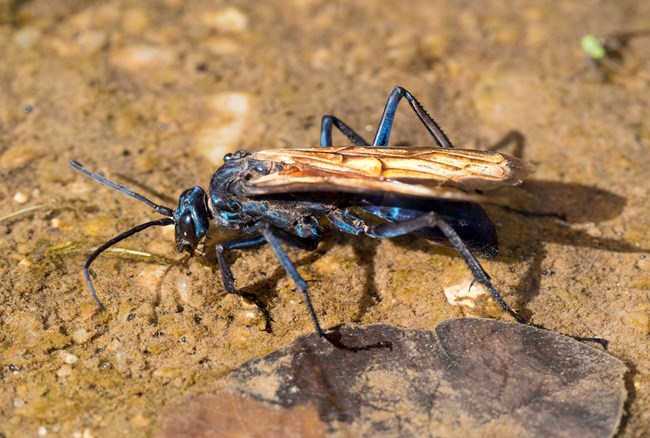Last updated: February 8, 2017
Article
Tarantula Hawk

NPS Photo/ Robb Hannawacker
Scientific Name
Pepsis thisbe
Identification
- Tarantula hawks are large wasps. Pepsis thisbe, the most common species of tarantula hawk in the Grand Canyon, can grow up to 2 inches (5mm) in length.
- Tarantula hawks have dark blue, iridescent bodies, bright orange wings, and long legs.
- Males have straight antennae, females have curly antennae.
Habitat
- Tarantula hawks are found in every continent except Europe and Antartica. In the United States, they are found in the deserts of the southwest.
- Pepsis thisbe is most commonly seen on the South Rim and inside the Grand Canyon- areas where their prey, tarantulas, are most common.
Behavior
- While adult tarantula hawks are nectavores and feed on flowers, they get their name because adult females hunt tarantulas as food for their larvae.
- An adult female will paralyze a tarantula with its stinger, and then transport the spider back to the hawk's nest. Once there, the female lays an egg in the spider's abdomen, then covers the entrance of the burrow to trap the spider.
- Once the egg hatches, the larvae will feed on the still living spider for several weeks, avoiding vital organs to keep the spider alive until the larvae pupates into an adult wasp.
- Males do not have stingers, but females have a ¼ inch (7mm) stinger. They will not sting unless provoked, but their sting is reported to be the second most painful sting of any insect.
- Roadrunners are one of the few animals that will risk being stung to feed on tarantula hawks.
